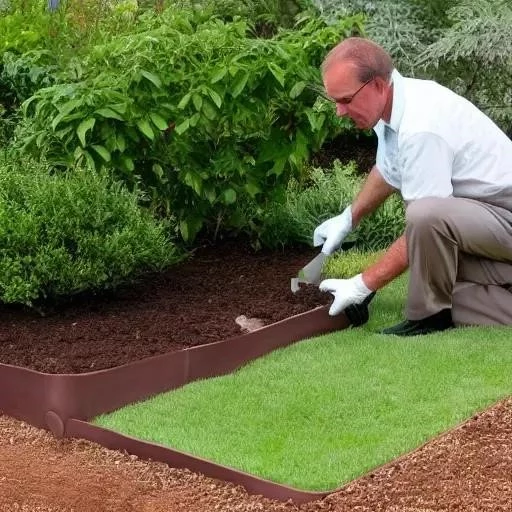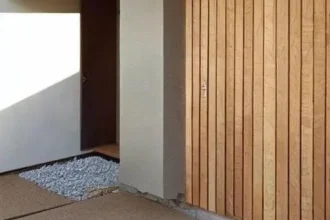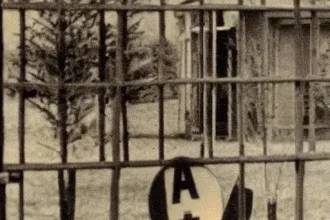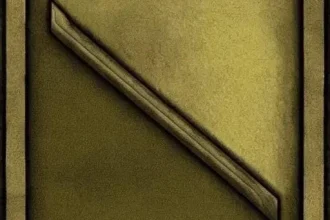Every gardener, from the budding enthusiast to the seasoned horticulturist, shares a universal dream: a vibrant, flourishing flower garden, bursting with color and life, requiring minimal arduous upkeep․ Yet, the relentless battle against weeds, the constant struggle for moisture retention, and the sheer time investment often transform this idyllic vision into a daunting, back-breaking chore․ Imagine a world where your prized petunias and regal roses thrive unimpeded, where invasive weeds are but a distant memory, and your precious weekend hours are reclaimed for pure enjoyment rather than endless weeding․ This seemingly elusive paradise is not a fantasy; it’s an attainable reality, powerfully facilitated by a remarkably simple yet incredibly effective tool: the humble landscape fabric․
For too long, many have dismissed landscape fabric as merely a utilitarian component, relegated to construction sites or obscure corners of the garden․ However, a growing cadre of forward-thinking gardeners and professional landscapers are increasingly recognizing its transformative potential․ By integrating insights from cutting-edge horticultural research and practical application, we are discovering that this woven wonder is not just a barrier; it’s a strategic ally in cultivating truly spectacular, low-maintenance flower beds․ This ingenious material offers a robust foundation, drastically reducing weed germination while simultaneously preserving vital soil moisture, ultimately fostering a healthier, more resilient ecosystem for your beloved blooms to flourish spectacularly․
Key Considerations for Landscape Fabric in Flower Beds
| Category | Description | Important Note/Reference |
|---|---|---|
| Purpose & Benefits | Primarily used for weed suppression, moisture retention, and soil temperature regulation․ Creates a cleaner, more organized garden aesthetic․ | Significantly reduces the need for chemical herbicides․ |
| Types of Fabric | Available in woven (breathable, durable) and non-woven (more restrictive, often for temporary use) varieties․ Permeability is key․ | Opt for UV-stabilized, permeable woven fabrics for long-term flower beds․ |
| Installation Best Practices | Proper ground preparation (clearing weeds, leveling), secure pinning, and appropriate plant spacing are crucial for success․ | Ensure overlapping seams and cover with mulch for longevity and aesthetics․ |
| Plant Selection | Best suited for perennial plants, shrubs, and trees․ Annuals can be planted but require more frequent fabric cutting․ | Consider mature plant size and growth habits when cutting fabric holes․ |
| Maintenance & Longevity | Requires occasional inspection for tears or shifting․ Top dressing with organic mulch enhances effectiveness and appearance․ | Can last 5-10+ years with proper installation and care․ |
For further general information on landscape fabric uses, you can visit Gardening Know How․
The Unseen Architect: How Fabric Transforms Your Garden
Think of landscape fabric not as a barrier to life, but as a discerning architect, meticulously designing the conditions for optimal growth․ Its primary function, weed suppression, is undeniably revolutionary․ By physically blocking sunlight from reaching weed seeds in the soil below, it starves them of the energy needed for germination․ This dramatically diminishes competition for nutrients and water, allowing your carefully chosen flowers to flourish unimpeded․ Moreover, many high-quality fabrics are designed to be permeable, allowing water, air, and essential nutrients to pass through freely, nourishing your plants while simultaneously preventing unsightly weeds from encroaching upon your horticultural masterpiece․ This thoughtful design ensures that the soil beneath remains healthy and active, a vibrant ecosystem for roots to thrive․
Beyond its prowess in weed control, landscape fabric acts as a vigilant moisture guardian․ It significantly reduces evaporation from the soil surface, meaning your plants receive more of the water you provide, less of which is lost to the atmosphere․ This translates into less frequent watering, a precious conservation of resources, and a substantial reduction in your garden maintenance schedule․ During scorching summer months, this moisture retention can be the critical difference between wilting despair and robust, blossoming vitality․ Furthermore, by stabilizing soil temperatures, keeping roots cooler in the scorching heat and slightly warmer during unexpected cold snaps, it creates a more consistent and forgiving environment, promoting vigorous plant development․
Crafting Your Floral Haven: A Step-by-Step Blueprint
Embarking on this journey requires a methodical approach, ensuring your efforts yield enduring beauty․ First, meticulously clear the chosen area of all existing weeds, debris, and rocks; Achieving a smooth, level surface is paramount for effective fabric application․ Next, improve your soil by incorporating organic matter like compost, providing a nutrient-rich foundation for your future blooms․ Once prepared, carefully unroll the landscape fabric, ensuring it overlaps by at least 6-12 inches at the seams to prevent any opportunistic weeds from sneaking through․ Secure the fabric firmly to the ground using landscape staples or pins, spacing them every 2-3 feet along the edges and seams․ This critical step prevents wind from lifting the fabric and maintains its protective integrity․
With the fabric securely in place, the exciting moment of planting arrives․ Using a sharp utility knife, carefully cut X-shaped or circular openings in the fabric where each plant will reside․ Make these openings only as large as necessary to accommodate the plant’s root ball, minimizing exposed soil․ Gently tuck the edges of the fabric under the plant’s base, ensuring a snug fit․ After planting, water thoroughly․ The final, and aesthetically pleasing, step is to cover the entire fabric-covered area with a 2-4 inch layer of organic mulch – be it shredded bark, wood chips, or gravel․ This not only conceals the fabric, enhancing the bed’s visual appeal, but also provides an additional layer of weed suppression, further conserves moisture, and helps anchor the fabric more securely, extending its remarkable lifespan․
Expert Perspectives and a Flourishing Future
Leading horticulturalists universally commend the strategic use of landscape fabric for its sustainable benefits․ “It’s a game-changer for reducing herbicide reliance and water usage,” states Dr․ Eleanor Vance, a renowned botanist specializing in sustainable landscapes․ “When installed correctly and paired with appropriate plant choices, it empowers gardeners to achieve stunning results with significantly less environmental impact and personal effort․” Industry examples abound, from sprawling public parks maintaining immaculate flower borders with reduced labor costs, to residential gardens boasting year-round splendor, all underpinned by this foundational material․ This forward-looking approach to gardening is not just about convenience; it’s about creating more resilient, beautiful, and eco-conscious spaces․
Imagine your future self, strolling through a vibrant flower bed, free from the tyranny of weeds, enjoying the sheer artistry of nature’s palette․ By embracing landscape fabric, you are not merely installing a product; you are investing in a smarter, more sustainable, and ultimately more joyful gardening experience․ This is the dawn of a new era for home gardeners, where innovation meets nature, transforming the dream of a picture-perfect, low-maintenance flower garden into a tangible, breathtaking reality․ So, roll up your sleeves, but perhaps less often, and prepare to cultivate the garden you’ve always envisioned, powered by the silent, steadfast guardian beneath your blooms․






